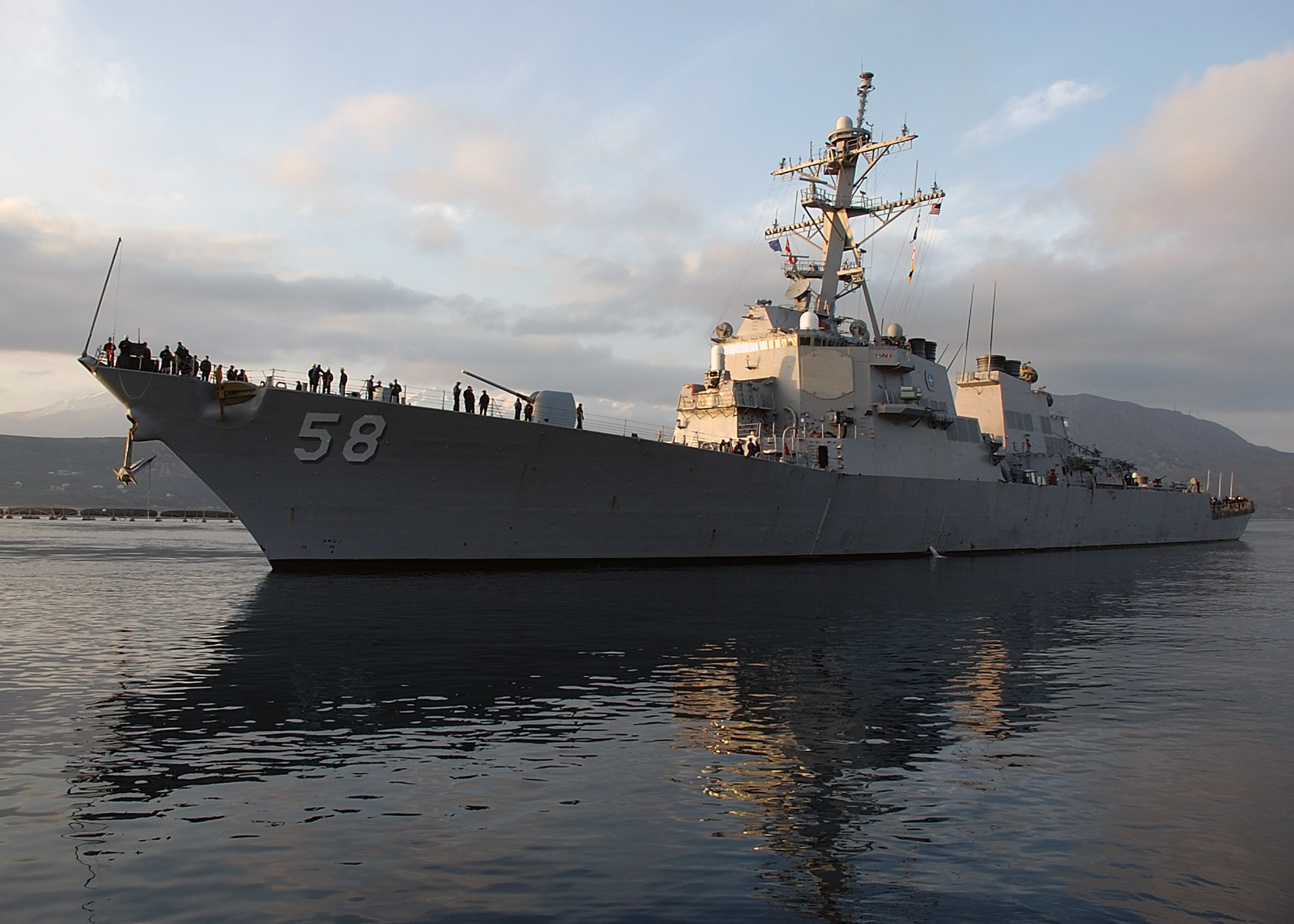Alligator Dagger is the largest regional amphibious combat rehearsal to integrate and synchronize TF 51/5’s warfighting capabilities and those of adjacent U.S. Naval Forces Central Command and Special Operations Forces units.
The U.S. Naval Amphibious Forces, Task Force 51/5th Marine Expeditionary Brigade (TF 51/5), announced the commencement of a two-week amphibious training event, Alligator Dagger in international waters off the coast of Djibouti, Africa, on April 3, 2018.
Alligator Dagger is the largest regional amphibious combat rehearsal to integrate and synchronize TF 51/5’s warfighting capabilities and those of adjacent U.S. Naval Forces Central Command and Special Operations Forces units.

Amphibious assault ship USS Iwo Jima (LHD 7) departs Naval Station Mayport
“USS Iwo Jima’s Amphibious Ready Group (ARG) and the 26th Marine Expeditionary Unit (MEU) are prepared to rehearse a variety of tactical capabilities in this demanding and globally vital region,” said Marine Brig. Gen. Frank Donovan, commander of TF 51/5. “This critical amphibious combat proficiency training will ensure our integrated Navy and Marine Corps forces are postured and prepared to execute operations at sea, from the sea and ashore.”
The Military Sealift Command expeditionary mobile base USNS Lewis B. Puller (T-ESB 3) departs Naval Station Norfolk to begin its first operational deployment. Puller is deploying to the U.S. 5th Fleet area of operations in support of U.S. Navy and allied military efforts in the region. U.S. Navy photo by Bill Mesta.
USS Lewis B. Puller (ESB 3), named after Lt. Gen. Lewis “Chesty” Puller – one of the most decorated members of the Marine Corps, the Wasp-class amphibious assault ship USS Iwo Jima (LHD 7), Harpers Ferry-class dock landing ship USS Oak Hill (LSD 51), Arleigh Burke-class destroyer USS Laboon (DDG 58) and the 26th MEU are scheduled to participate.
The guided missile destroyer USS Laboon (DDG 58) is conducting operations in support of Operation Active Endeavor, and is designed to prevent the movement of terrorists or weapons of mass destruction as well as to enhance the security of shipping in the Mediterranean Sea — U.S. Navy photo by Paul Farley.
“Alligator Dagger allows us to employ the breadth and depth of our combined arms team in an extremely challenging expeditionary environment characterized by extreme temperatures and unforgiving terrain,” said Col. Farrell J. Sullivan, commanding officer of the 26th MEU. “This combat rehearsal allows us to practice our key mission essential tasks spanning the range of military operations to resolve conflict, conduct humanitarian assistance and/or combat the enemy in remote, austere environments that would otherwise be inaccessible.”
Dock landing ship USS Oak Hill (LSD 51) and the Bataan Expeditionary Strike Group (ESG) enter U.S. Central Command's Area of Responsibility as they transit the Suez Canal. The 26th Marine Expeditionary Unit is the landing force for the Bataan ESG, and is currently on deployment in support of the global war on terrorism — U.S. Marine Corps photo by Sergeant Freddy G. Cantu.
Alligator Dagger will provide Iwo Jima and Oak Hill an opportunity to enhance capabilities in critical mission sets. Using landing craft and Iwo Jima’s embarked aircraft, the ships will provide a flexible and ready amphibious capability to deliver 26th MEU Marines, equipment and supplies ashore.
“We must be a crisis response force ready to execute mission-essential tasks for our component commanders,” said Capt. Jack Killman, commander of Amphibious Squadron 4. “Alligator Dagger will keep the Iwo Jima ARG ready to effectively deliver a multi-capable amphibious force to austere environments by air or sea.”
Alligator Dagger is the premier integrated combat proficiency training the U.S Navy and Marine Corps team engage in during their deployment in the U.S. Central Command area of responsibility. Specifically, this exercise will enable the military to execute amphibious training; live-fire; visit, board, search and seizure; tactical recovery of aircraft and personnel as well as air assault evolutions.
“When it comes to crisis response, the ARG/MEU team is the force of choice,” said Sullivan. “This training will help us keep our edge sharp and keep the Marines and Sailors focused. When called upon, we will be ready.”
Lt. Cmdr. Sandra Arnold, TF 51/5













